The Maruti Suzuki Baleno may be the new king of hatchbacks, but the 2018 Maruti Suzuki Swift is still one of the most important contenders in the premium hatchback space. It’s launch at the 2018 Auto Expo, then, meant that its competitors had to sharpen their claws and prepare for the fight. The Jazz is ready with a facelift that we saw at the 2017 Tokyo Motor Show and that should hit the market sometime this year. The Hyundai Elite i20, on the other hand, is updated for 2018 with cosmetic changes and equipment upgrades and the model was launched at Auto Expo just a day before the prices were announced for the all-new Swift.
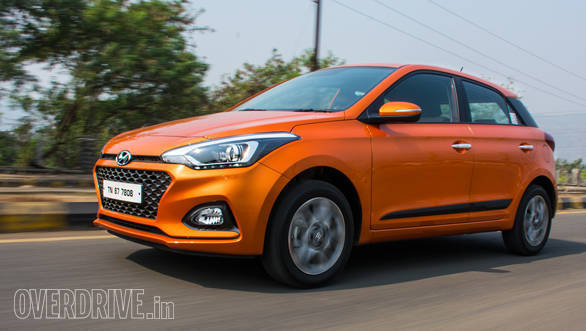
We got a chance to sample the 2018 Elite i20 in Mumbai in its new shade of sunburst orange, in the range-topping Asta trim. The cosmetic changes are minimal but easy to notice. The three-pot detailing of the taillights has made way for a new pattern made up of horizontal lines (and somehow reminds me of the Mercedes-Benz GLA’s taillights). It is surprising that Hyundai did not make use of more efficient LED lighting for it. The reflectors and fog/reversing lamps placed on the rear bumper have been re-profiled too.
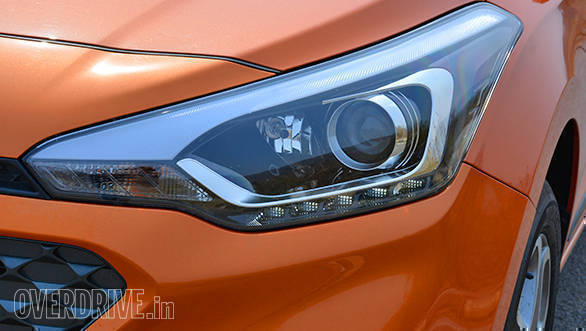
At the front, the Elite i20 now wears the reshaped hexagonal grille and the complex mesh pattern adds a bit of flair to the familiar face. The bumpers integrate a new design for the fog/cornering lamp housing, that now carves out vertical crevices on the outer ends for better airflow and a marginal reduction in drag. The paint quality looks quite premium and is on par with some of the more expensive cars in Hyundai’s line up. The Elite i20’s new orange and red exterior colours can be specified with a gloss black roof and that gets you a matching two-tone colour scheme for the cabin elements too.
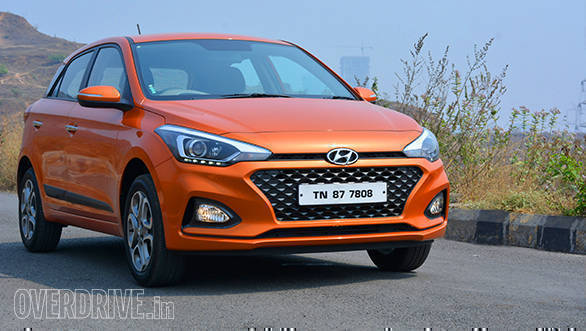
Speaking of the cabin, it receives a few nips and tucks too. The most important is the new touchscreen infotainment system, which now incorporates an IPS display that has lesser glare and is easier to read from varied angles. The operating system now uses a greyscale theme for its icons and menus, replacing the blue theme seen on the outgoing model. The system is compatible with Hyundai’s new smartphone app (that debuted with the Verna) that lets you monitor your driving patterns, track service history, and schedules and access certain vehicular functions like trip data. Hyundai has also thrown in an additional USB charging port that sits in line with the USB media port and 12V socket in the centre console. My carpool companions, then, feel happier in the new Elite i20 than our long-term Tucson loaner!
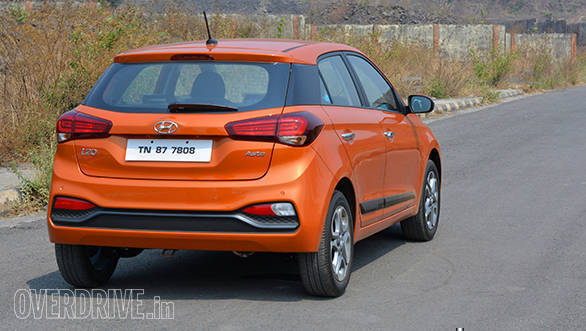
If you don’t opt for the aforementioned dual-tone colour scheme for the exterior, then by default the Elite i20 ships with a black and beige combination for the dashboard and upholstery. The mid-life update now uses a darker shade of beige for better endurance to dusty conditions. The upholstery is done up in matching shades too and has a new pattern compared to the outgoing car. There is no change to the seating arrangement or to the contouring of the seats. They are quite comfortable and I still feel that the rear seat could have done with more recline.
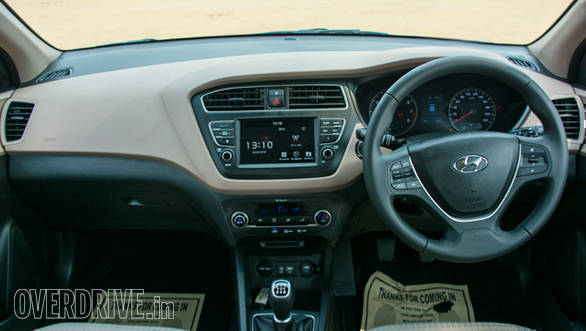
Choosing the range-topping trim seen here, let’s you secure the cabin with up to six airbags. Unlike the Grand i10, the Elite i20 is a more responsible car and gives you anti-lock brakes and the driver and front passenger airbags as a standard fit. The rear seats now come with Isofix child seat anchorage too.
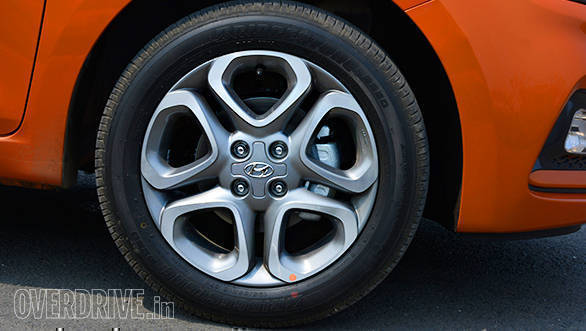
Hyundai hasn’t made any significant mechanical changes to the Elite i20. You can either opt for the popular and punchy 1.4l diesel engine with a slick 6-speed gearbox, or go with the rev-happy 1.2l petrol with a convenient CVT automatic or a 5-speed manual. The latter is what you see here. To refresh your memory about the character of these engines, both work well for urban routines and highway runs. Driving around the twisties will need you to keep the petrol engine on the boil, while the diesel is easier to have fun with, with its healthy mid-range torque.
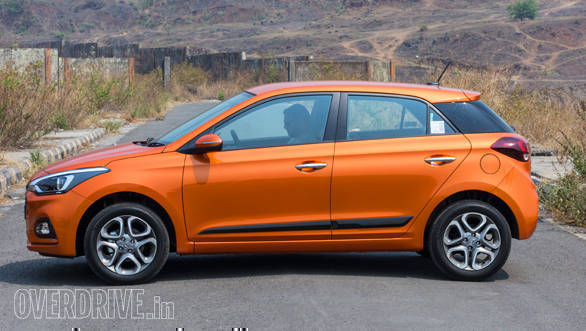
Hyundai claims a nine percent improvement in fuel economy, thanks to the better aerodynamic efficiency of the front end. During our test on the manual petrol, we didn’t find any noticeable difference in the city economy of the car. The highway runs revealed a marginal improvement over the outgoing Elite i20 of similar spec (13.41kmpl city / 22.33kmpl highway vs 13.3kmpl city / 21.2kmpl highway). The rest of the package remains quite likeable as ever with a refined drivetrain, a conveniently light steering, progressive brakes and a supple ride.
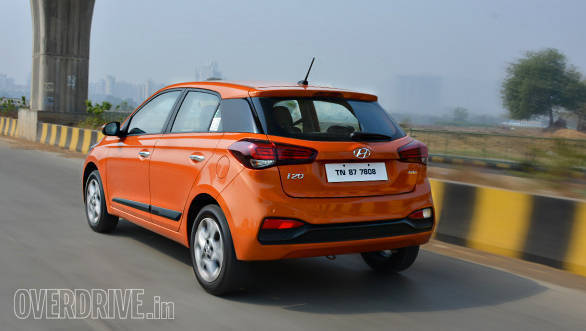
The i20 has always been a premium hatchback that is brimming with features and the new one builds further on the virtues. More importantly, the updated Elite i20 does a better job of distributing its safety features and creature comforts across its long list of trims and that in my opinion, makes it one of the best buys in the segment
Starts Rs 5.35 Lakhs
1396cc
Manual
90
220
22.54 Kmpl
Starts Rs 5.36 Lakhs
1197cc
Automatic
84
115
21.4 Kmpl
Starts Rs 31.72 Lakhs
1991cc
Automatic
380
475
-NA-